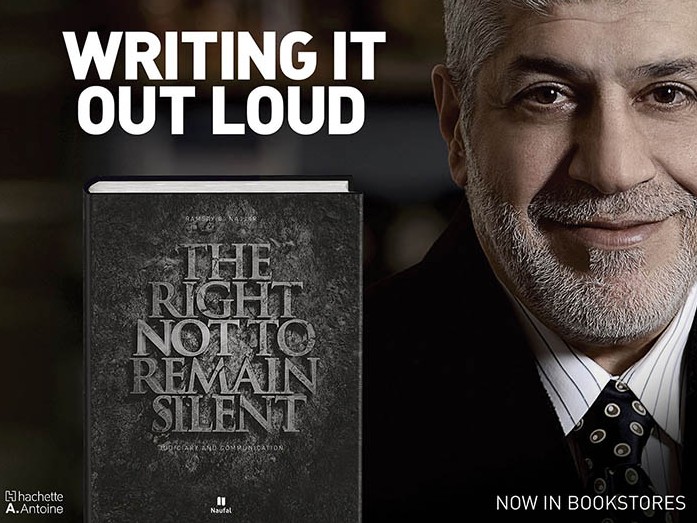Industry Talk - Free Talk
The Revolutionary Evolution of Communication
by Jad Haidar
April 11, 2016
.jpg) Advertisement
AdvertisementThis quest, he soon relaised, was monumental, which at times also felt impossible, since no research into the idea he wanted to prose existed! So, instead of giving-up on the matter, he raised his sleeves and prepared himself to go as deep as deemed necessary to unearth and formulate a working model for future implementation.
Driven by curiosity to know why he would undertake such a behemoth task, the man, who sat comfortably in his black leather chair in a dimly lit office explained in the following interview.
The main objective behind writing ‘The Right Not to Remain Silent’, was originally driven by the desire to valorize communication, especially that it is extremely ignored and misrepresented. On an equally important note, the death of Rafic Hariri in 2005 as well as the string of brutal assassinations that followed, highlighted the need to emphasise the role communication plays in the judiciary system. So, I decided to investigate the available literature on the matter and to my surprise, I was dumfounded to discover, after plenty of due diligence, that there almost was nothing on the topic.
In addition, the judiciary system, a long time ago felt the threat the communications sector poses if it gets too close and so ‘closed the door’ to prevent any prying into ‘sensitive’ matters. That is also when ‘The Right to Remain Silent’ was conceived. However, with the rise of ‘new media’ the infamous wall of silence, collapsed. Coupled with the evolution of investigative journalism that emerged during the Water Gate scandal, it gradually became the proverbial safety net of the judiciary system. This matter gained additional traction in the age of ‘citizen journalism’, necessitating the need to find middle ground when it comes to the judiciary system and the communications field.
Keep in mind that in today’s world, a single person can easily create, based on ‘insider information’ a scandal, which can swiftly go viral on the Internet in a matter of minutes and cause irreparable damage. This reality then begs the question of, where do we draw the line and also is the central point this book tires to answer. In other words, if the judiciary system maintains an open and somewhat transparent channel with the media, such a crisis could easily be averted.
The irony of it, which also explains why we are facing this issue, is also because law students and judiciary institutions do not have a communication curriculum. So, how can one expect a lawyer to effectively communicate when he/she never learned this skill to begin with? Worse still, how is it that a profession based on communication excludes the very field on which it is based?
So, and in hope of introducing a change in keeping with the times, I wrote the book to outline a conciliatory strategy between the judiciary system and the communications field in a way that preserves the sanctity of both entities while allowing them to operate, unhindered, in a complimentary way. Otherwise, the culprits will remain free while humanity gradually regresses.
And I, no longer am willing to remain silent.




.jpg)










